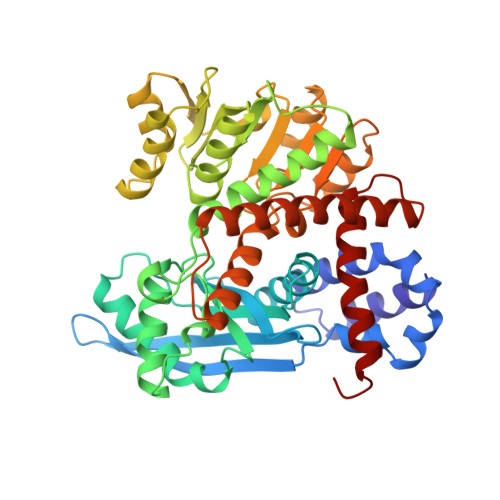Conformational flexibility in glutamate dehydrogenase. Role of water in substrate recognition and catalysis.
Stillman, T.J., Baker, P.J., Britton, K.L., Rice, D.W.(1993) J Mol Biology 234: 1131-1139
- PubMed: 8263917
- DOI: https://doi.org/10.1006/jmbi.1993.1665
- Primary Citation of Related Structures:
1BGV - PubMed Abstract:
We have solved the structure of the binary complex of the glutamate dehydrogenase from Clostridium symbiosum with glutamate to 1.9 A resolution. In this complex, the glutamate side-chain lies in a pocket on the enzyme surface and a key determinant of the enzymic specificity is an interaction of the substrate gamma-carboxyl group with the amino group of Lys89. In the apo-enzyme, Lys113 from the catalytic domain forms an important hydrogen bond to Asn373, in the NAD(+)-binding domain. On glutamate binding, the side-chain of this lysine undergoes a significant movement in order to optimize its hydrogen bonding to the alpha-carboxyl group of the substrate. Despite this shift, the interaction between Lys113 and Asn373 is maintained by a large-scale conformational change that closes the cleft between the two domains. Modelling studies indicate that in this "closed" conformation the C-4 of the nicotinamide ring and the alpha-carbon atom of the amino acid substrate are poised for efficient hydride transfer. Examination of the structure has led to a proposal for the catalytic activity of the enzyme, which involves Asp165 as a general base, and an enzyme-bound water molecule, hydrogen-bonded to an uncharged lysine residue, Lys125, as an attacking nucleophile in the reaction.
- Krebs Institute, Department of Molecular Biology and Biotechnology, University of Sheffield, U.K.
Organizational Affiliation:

















